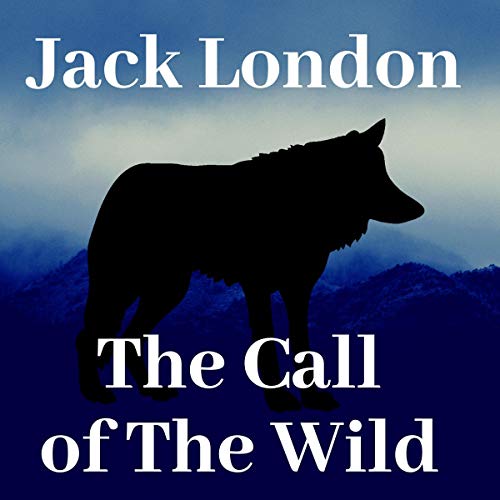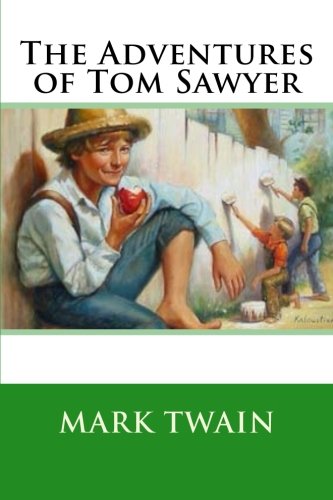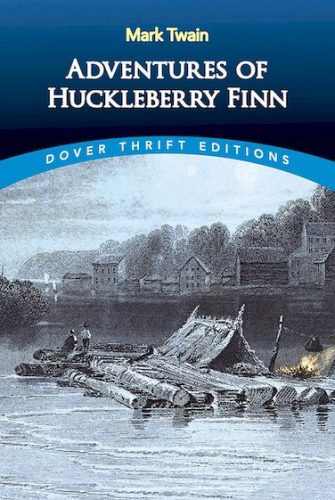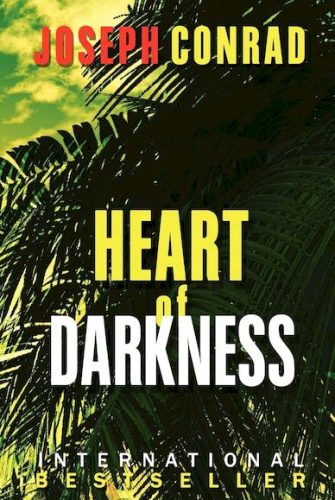Jack London’s “The Call of the Wild” roared onto the literary scene, catapulting him to instant fame and securing his place among the greats. Despite publisher concerns that its stark realism might alienate readers, the novel’s raw power resonated, selling out its initial 10,000-copy print run in a flash.
This timeless tale follows Buck, a once-pampered dog who finds himself thrust into the unforgiving wilderness of the Klondike Gold Rush. As he navigates the harsh realities of survival, his primal instincts awaken, leading him on a journey of self-discovery amidst the breathtaking yet brutal beauty of the American North.
While many film adaptations portray the dog-human bond, the novel delves deeper, becoming a compelling testament to the struggle for survival and the untamed spirit of the wild. It’s the chilling bite of the Alaskan wind, the primal cry of the wolf pack, and the indomitable spirit of an animal reclaiming its place in the natural world.

- Key Insights
- Summary: The Call of the Wild
- A Life of Leisure
- Stolen in the Night
- Harsh Lessons
- Life as a Sled Dog
- Fight for Life
- A Battle for Leadership
- Top Dog
- Run Down and Worn Out
- Rescued
- Best Friends
- Building a Name
- Into the Wild
- Learning to Hunt
- Loss of a Friend
- A New Life
- The Legend of Ghost Dog
- Dissecting “The Call of the Wild”
- Themes and Interpretations
- History and Legacy
Key Insights
The tale begins with Buck, a cherished family dog in California whose life takes a brutal turn when stolen and sold into servitude as a sled dog in the unforgiving Alaskan wilderness. Here, amidst the Klondike Gold Rush, the harsh realities of survival force Buck to confront his primal instincts. His journey transforms as he navigates the beautiful yet brutal landscapes of the North, torn between loyalty to John Thornton, a kind adventurer, and the primal call of the wild.
London’s experiences, forged during his Klondike Gold Rush expedition, lend authenticity to the story’s vivid descriptions. Readers are transported to the frozen Alaskan wilderness, experiencing its harshness alongside the allure of its untamed beauty.
The narrative echoes the classic hero’s journey, where Buck heeds the call to adventure, undergoes a profound transformation, and ultimately reaches a symbolic apotheosis. London’s masterful storytelling shines through in his poignant portrayals of both human and animal behaviour, leaving readers captivated by the raw emotions and unwavering spirit that define survival.
Interestingly, the story itself came to life in a mere month, penned by London between December 1902 and January 1903.
As the novel concludes, the iconic phrase “Never was there such a dog” resonates, leaving an indelible mark on the reader and solidifying Buck’s place as a literary legend.
Summary: The Call of the Wild
A Life of Leisure
California, the early 1900s. A gentle breeze rustles through the sun-drenched fields of Judge Miller’s sprawling estate in Santa Clara Valley. Here, a four-year-old mongrel named Buck, a majestic blend of St. Bernard and Scotch Shepherd, reigns supreme. His days are a tapestry of carefree joy — romps with the Judge’s young children and grandchildren, playful chases across the vast fields, and evenings spent curled up by the crackling fireplace, basking in the warmth of the Judge’s affection.
Though the farm harbours other dogs, Buck, his spirit a unique blend of domestication and untamed wilderness, sees them beneath him. He may be a product of civilization, but the spirit of the wild burns brightly within him.
Stolen in the Night
Driven by the gnawing desperation of gambling debts, Judge Miller’s gardener, Manuel, hatches a cruel plan. One evening, cloaked in the shadows of an absent Judge attending a meeting, Manuel deceives Buck. A familiar rope, usually a symbol of playful walks, becomes a sinister tool. Unaware of the impending betrayal, Buck follows, mistaking their departure for another carefree stroll.
“Buck did not read the newspapers,” Jack London poignantly observes, “or he would have known that trouble was brewing.”
The world as Buck knew it crumbles as Manuel hands him over to a stranger. A guttural growl escapes Buck’s throat, met with the chilling bite of the rope tightening around his neck. He fights back with the primal instinct of a cornered animal, only to be silenced by a blow that plunges him into the abyss of unconsciousness.
He awakens to the harsh clang of the train. His throat dried, and the weight of a heavy collar was a constant reminder of his captivity. The fire of defiance burns within him. Despite the throbbing pain, he lunges at his captor, only to be met with the crushing brutality of a club.
Harsh Lessons
Fueled by thirst and simmering rage, Buck confronts his new captor, a man clad in a red jumper. Yet, his ferocity is met with practiced ease. The man effortlessly dodges Buck’s lunge and delivers a debilitating blow with a club. Dazed and confused, Buck’s spirit remains unbroken. He launches himself repeatedly, each attempt met with the same crushing response. The relentless assault takes its toll, leaving him bloodied and battered. He is forced to confront a harsh reality: the club reigns supreme in this new world.
“The club “was his introduction to the reign of primitive law, and he met the introduction halfway.”
A grudging acceptance settles over Buck. The man with the club is the new master, and Buck bows his head, though not his spirit. He observes the other dogs, some cowering, others attempting to curry favour. This path, however, has yet to appeal for Buck. His independent spirit remains undimmed, waiting for the moment to rise again.
The red-clad trader soon sells Buck and another dog named Curly to Perrault and François, sled drivers seeking to bolster their team. As Buck is thrust into his new role, a chilling realization dawns: the idyllic life he once knew has vanished, replaced by the harsh realities of survival in the unforgiving Alaskan wilderness.
Life as a Sled Dog
Buck’s journey is difficult as he and his fellow canines embark on a ship bound north. The vast expanse of the ocean gives way to the unfamiliar bite of snow beneath his paws as Perrault grants them a brief moment on deck. This new world, shrouded in white, holds both wonder and danger.
Dyea Beach becomes a brutal initiation into the harsh realities of survival. A playful approach from Curly, another dog, is met with savage aggression from Spitz, the cunning leader of the sled team. In a blink, a playful greeting turns into a deadly attack, with Curly falling victim to the pack mentality. The other dogs, initially hesitant, join the fray, leaving Buck with a chilling lesson: trust is a luxury he can no longer afford.
Thrust into his role as a sled dog, Buck finds himself harnessed alongside a motley crew. François’s whip and the relentless guidance of the more experienced dogs become his harsh teachers. Spitz, the undisputed leader, embodies the law of the fang, and Buck observes and learns despite the humiliation of being reduced to a mere draft animal.
His muscles adapt to the demands of the unforgiving terrain, his feet harden, and a primal awareness, dormant within him, awakens. Nights are spent seeking warmth by burrowing deep into the snow, while meals become a desperate scramble to devour his rations before another claims them. With each passing day, Buck relies more and more on the dormant instincts of his wild ancestors, their wisdom a vital tool in this new and unforgiving world. The world of man recedes, replaced by the untamed wilderness and the growing awareness of the primal forces that lie dormant within him.
Fight for Life
Spitz, the seasoned leader, viewed Buck as a rival, relishing any opportunity to assert his dominance. Buck, ever wary, kept a low profile, avoiding confrontations.
However, one particularly gruelling day, after enduring the relentless bite of the cold and the punishing demands of the trail, Buck found his designated sleeping place usurped by Spitz. Throwing caution to the wind, Buck challenged Spitz, a primal defiance taking hold.
Their brutal brawl was abruptly interrupted by the chilling arrival of a pack of wild, hungry huskies. Drawn by the scent of potential prey, they descended upon the camp with a frenzy. The sled dogs were caught off guard and forced to fight for their lives. Even amidst the chaos, Spitz continued to press his attack on Buck.
The men and the combined strength of the sled dogs eventually drove off the wild intruders. The victory, however, came at a heavy cost. Every dog bore the marks of the fight, their bodies marred by multiple wounds. Their carefully stockpiled supplies, vital for their survival, were now depleted by half. This harrowing encounter underscored the harsh realities of their existence. The wilderness was a constant adversary, demanding a relentless fight for survival, not just from the elements, but also from the complex dynamics within their own pack.
A Battle for Leadership
Days after the harrowing encounter with wild huskies, the fragile peace within the pack shatters. A sudden frenzy overtakes Dolly, leading her to attack Buck. Though he escapes, François is forced to end her violent rampage mercifully. Witnessing Buck’s vulnerability, Spitz seizes the opportunity to inflict a painful bite, only to be driven back by François’s whip. This incident marks the declaration of open war between the two rivals.
Buck, however, chooses a different tactic. He never openly challenges Spitz’s leadership but subtly undermines it, encouraging the other dogs to question his authority. Their arrival in Dawson offers a brief respite, a seven-day fragile truce. Yet, the return journey is marred by the disintegrating discipline within the team, a direct consequence of the ongoing power struggle.
One day, a snowshoe rabbit ignites a spark of primal instinct. Dub catches sight of the creature, setting off a mad dash involving the entire team and a nearby pack of fifty dogs. With Buck in the lead, the chase unfolds in a flurry of snow and adrenaline.
Fueled by cunning, Spitz cuts off the chase, claiming the rabbit as his prize. But this victory is short-lived. Buck, seizing the moment, lunges for Spitz’s throat, initiating the long-awaited battle for supremacy.
“There was no hope for [Spitz]. Buck was inexorable. Mercy was a thing received for gentler climes.”
Initially, Spitz’s experience gives him an edge. Buck sustains several wounds while Spitz remains unscathed. But Buck, driven by a fierce determination to claim his rightful place, resorts to a strategic maneuver. He breaks Spitz’s front legs in a moment of cunning, effectively removing him from the game. Sensing the shift in power, the other dogs descend upon Spitz, tearing him apart. The battle is over, and Buck stands as the undisputed leader, his ascendancy marked by blood and snow. This brutal victory marks a significant turning point in Buck’s journey. He has not only claimed leadership but has also stepped further into the primal world that now calls to him.
Top Dog
Victorious but wary, Buck stood his ground, his gaze fixed on the lead harness. Though his triumph over Spitz secured his dominance within the pack, the human handlers, Perrault and François, remained a variable he couldn’t control.
When they assigned the lead position to the seasoned Sol-Lek, ignoring Buck’s rightful claim, the newly forged leader refused. He stood just out of reach, an imposing figure radiating defiance. The air crackled with tension as an hour crawled by. Finally, understanding dawned on the men’s faces, and with a sigh, they conceded.
Buck, the embodiment of raw power and determination, stepped into his rightful place at the helm. Under his leadership, the team transformed. Discipline returned, each dog seamlessly fulfilling their role, propelling the sled forward with renewed efficiency. Their journey back to Skagway unfolded in record time, a testament to Buck’s natural leadership surpassing even the seasoned Spitz.
At Skagway, a new chapter awaited. Perrault and François sold the entire team to a Scottish half-breed entrusted with delivering mail between Skagway and Dawson. The load this time, heavier than any they had encountered, tested their limits. Yet, under Buck’s unwavering guidance, the team pulled together, their movements synchronized in a dance of survival.
As the miles blurred past, peculiar visions began to plague Buck. Eerie images of an ancient man, hunched over a crackling fire, watching silently, flickered at the edges of his consciousness. These unsettling yet strangely familiar visions hinted at a connection to a forgotten past, a primal world stirring within him. The call of the wild, long dormant, was starting to awaken.
Run Down and Worn Out
The unforgiving terrain and relentless pace began to exact their toll. Dave, once a stalwart member of the team, succumbed to a gnawing internal pain, its cause shrouded in mystery. His strength waned, and his steps faltered in the harness. The men, touched by his determination, allowed him to run alongside the sled. But one cruel morning, too weak to rise, Dave was left behind, a single gunshot echoing through the silent wilderness.
Reaching Dawson, the dogs, their bodies spent and spirits frayed, dreamt of a well-deserved respite. However, the relentless demands of the mail left no room for sentimentality. A new team, fresh and eager, replaced them.
Their next chapter unfolded under the ownership of three inexperienced adventurers – Hal, his sister Mercedes, and her husband, Charles. Their lack of knowledge about dogs and the wilderness became brutally evident. They overloaded the sled, exceeding the team’s capacity, and offered meagre rations, pushing the animals to the brink of starvation. Their disorganization wasted precious daylight; their reliance on the whip and club became their default method of motivation.
Initially swayed by compassion, Mercedes attempted to shield the dogs from her brother and husband’s harsh treatment. But her resolve waned under the strain of the journey. Soon, she added to the burden, claiming a seat on the already overloaded sled.
Halfway through their journey, their meagre supplies dwindled to nothing. Hunger stalked the team, leaving a trail of emaciated bodies in its wake. Buck, ever the leader, watched helplessly as his companions succumbed, a silent despair gnawing at his spirit. The harsh realities of their existence sunk in, pushing him further towards the primal instincts that thrummed beneath the surface.
Rescued
Exhaustion gnawed at the team as they stumbled into John Thornton’s camp. Spring, a mere whisper in the air, signalled the dangerous melting of the frozen rivers. John, a man seasoned by experience, urged Hal, Charles, and Mercedes to abandon their foolhardy journey – the treacherous ice posed an imminent threat. Their defiance, however, was as stubborn as the frosted ground. His frustration mounting, Hal raised his hand against the collapsed dogs, demanding they rise and pull again.
All but Buck succumbed to the cruel command. Their bodies, ravaged by hardship, refused to obey. Yet, Buck, the defiant leader, remained rooted to the spot. Hal, his rage boiling over, swung the club, aiming to break Buck’s spirit. But the blow never landed.
His face etched with resolve, John Thornton stepped between man and beast. With a single, decisive move, he severed the half-dead dog from the harness. The team, a sorry sight, limped on without him.
Buck watched their departure from a distance, a heavy weight settling in his chest. As fate would have it, the very danger John warned against materialized. The weakened ice beneath the travellers gave way, swallowing them in its icy embrace. The once-proud team and their misguided owners vanished beneath the surface, leaving behind only the chilling echo of the breaking ice and the lingering memory of John’s compassion, a beacon of hope in a world of relentless hardship.
Now free yet burdened by loss, Buck stood at a crossroads. His loyalty to his human companions, though tested to its limits, remained a flicker in the darkness. But the call of the wild, long suppressed, grew stronger with each passing moment. The harsh realities of his journey had awakened something primal within him, a force yearning to be unleashed. Shrouded in uncertainty, his future awaited a new chapter waiting to be written in the untamed wilderness.
Best Friends
John Thornton, a beacon of kindness amidst the unforgiving wilderness, became Buck’s unlikely saviour. Under his gentle care, Buck’s physical and emotional wounds began to heal. John’s two companions, Skeet and Nig, welcomed Buck into their pack, offering warmth and camaraderie.
But the bond between John and Buck blossomed into something far more profound. A fierce and unyielding love blossomed in Buck’s heart, a sentiment he had never experienced with any human before. They developed their unique language of affection — John, with his playful head-shakings and teasing names, and Buck, with his gentle nips that left telltale marks, a testament to their unwavering devotion.
“Love, genuine passionate love, was his for the first time,” Jack London writes.
Flourishing under John’s care, Buck regained his strength and spirit. When John’s partners, Hans and Pete, returned, the four men and their canine companions embarked on a new adventure together. Buck, his loyalty to John absolute, would follow him anywhere, even to the brink of oblivion. One day, in a moment of playful curiosity, John tested the depth of Buck’s devotion. He issued a chilling command: “Jump!” without hesitation, Buck prepared to launch himself off a dangerous cliff. Only at the last possible moment did John pull him back, the playful test solidifying a bond forged in trust and unwavering loyalty.
Though born of a lighthearted curiosity, this act served as a stark reminder of the profound connection that transcended the boundaries of species. In John Thornton, Buck had found not just a saviour but a kindred spirit, a friend who understood the language of loyalty and stood as a testament to the enduring power of love, even in the harshest corners of the wild.
Building a Name
Regaining his formidable strength, Buck swiftly becomes a paragon among canines. His undying fidelity to John Thornton is immortalized when he valiantly intercepts a man threatening John’s life in a tavern, targeting his assailant’s throat with lethal precision. In another act of daring, Buck doesn’t hesitate to plunge into the tumultuous currents of a river to save John from the clutches of death, risking his own life in the heroic endeavour.
Driven by Buck’s extraordinary feats and unshakeable loyalty, John is compelled to stake everything on a bold challenge: He wagers that Buck can liberate and haul a 1,000-pound sled, trapped in ice, across 100 yards. The stakes are high, with $2,000 on the line—representing the collective fortunes of John, Hans, and Pete. Positioned before the immobilized sled, John implores Buck to muster every ounce of his strength for this trial. With a heart full of determination, Buck triumphs, shattering the ice to drag the sled the entire distance.
“ ‘Never was there such a dog,’ said John Thornton one day, as the partners watched Buck marching out of camp.”
This victory amplifies Buck’s legend and secures the financial means for John and his companions to venture northward in search of a mythical mine, rumoured to be laden with untold treasures.
Into the Wild
With the winnings in hand, John Thornton and his companions embark on an ambitious expedition to unearth a fabled mine. Over a year, they traverse the untamed expanses of the wilderness, subsisting on the bounty of their hunts. Though the elusive mine remains beyond their grasp, fortune smiles upon them in a different guise—a bountiful spot along the Yukon, rich with gold. They establish their camp here, tirelessly collecting the precious metal that promises a new future.
Amidst their endeavours, the dogs revel in a tranquil existence, with Buck, in particular, feeling the ancient pull of the wild. Visions of an ancient ancestor beside a flickering fire haunt his dreams, igniting an irresistible urge to explore the mysteries that lie beyond the camp’s confines.
“Deep in the forest, a call was sounding, and as often as he heard this call, mysteriously thrilling and luring, he felt compelled to turn his back upon the fire and the beaten earth around it, and to plunge into the forest….”
Despite the allure of the unknown, Buck’s profound bond with John draws him back each time. However, a mysterious howl one day beckons him into the wilderness, leading him to an encounter with an old wolf. Initial suspicion fades as the wolf recognizes Buck’s intentions are peaceful, and they venture together, allies in the vastness of the wild. Buck senses that this meeting is the culmination of the call he’s been feeling, yet his unwavering loyalty to John guides him back to camp once more, a testament to the unbreakable bond between man and beast.
Learning to Hunt
Even as Buck’s bond with John remains unshaken, his ventures into the untamed wilderness grow increasingly prolonged. Embarking on a journey of self-discovery, Buck hones his hunting skills, challenging himself with ever more formidable prey. Initially satisfied with the pursuit of rabbits, fish, and beavers, his ambition escalates as he craves the thrill of more significant conquests.
On a fateful day, Buck encounters a majestic herd of elk. His eyes fixate on the dominant bull, symbolizing strength and leadership within the herd. Employing stealth and strategy, Buck isolates the leader from its pack. Over four gruelling days, in a relentless game of pursuit, Buck matches wits with the bull. The chase culminates in a dramatic showdown, with Buck emerging as the victor, claiming the elk’s life. This triumph marks a pivotal moment in Buck’s evolution as he masters the art of the hunt and asserts his dominance over the wilderness.
Loss of a Friend
Victorious yet uneasy, Buck hurries back to John, immediately sensing turmoil. His worst fears materialize at camp: his canine brethren lay slain. Enraged, Buck confronts the culprits, a group of Indigenous people, quickly overpowering them in a vengeful fury. With the threat eliminated, he desperately seeks John, only to find him lifeless in a lake. Overwhelmed with sorrow, Buck grieves deeply for his master. Yet, amidst his anguish, there’s a sense of accomplishment; Buck has overcome humanity’s challenge, marking a bitter victory in his saga.
A New Life
On the following night, the call of the wild resounds once more as Buck tunes into the resounding roars of the wolves. Drawn by a pack that emerges from the shadows, he is beckoned into their midst, no longer bound by the chains of human constraints. Standing amidst them, Buck exudes calmness and assurance. Faced with a barrage of challenges, he dispatches each assailant with effortless grace. Even as the pack unites in aggression against him, Buck stands undeterred, asserting his dominance. Eventually, the wolves yield, and an encounter with an aged wolf—a familiar face from Buck’s inaugural adventure into the untamed—marks a pivotal moment. Recognized and greeted by this old comrade, Buck is seamlessly embraced into their ranks, signalling the start of a new chapter in his existence in the wilderness.
The Legend of Ghost Dog
In the years that follow, the wilderness whispers tales of young wolves bearing unusual marks—dashes of brown adorning their muzzles and crowns, with stark white gracing their chests. Local tribes recount legends of a colossal Ghost Dog leading the pack, a figure shrouded in mystery and awe.
During the elk hunting seasons, a valley is untouched by hunters, shunned out of fear and respect. Yet this is the valley to which one great wolf returns every summer and sits for a time, howling mournfully.
Dissecting “The Call of the Wild”
Jack London’s “The Call of the Wild” unfolds in a concise narrative spanning seven chapters. The first five chapters chart Buck’s journey, from his comfortable life in California to the harsh Alaskan wilderness, culminating in his encounter with three adventurous newcomers. The final two chapters delve into his life with John Thornton and his ultimate acceptance into a wolf pack.
The story unfolds primarily from Buck’s perspective, with apparent shifts marked by London when transitioning to a human point of view. This immersive approach reflects the novel’s alignment with the “back-to-nature” genre popular during London’s era, further emphasized by its adherence to classic adventure novel conventions. However, beneath the surface of adventure lies a more profound resonance – the enduring myth of the hero.
In keeping with the genre, London’s prose is clear and direct, aiming to transport readers into his meticulously crafted world seamlessly. His exceptional storytelling ability manifests in vivid descriptions of human and animal behaviour and breathtaking portrayals of the unforgiving yet awe-inspiring Alaskan landscape. “The Call of the Wild” transcends mere entertainment, offering a profound exploration of nature, transformation, and the enduring appeal of the hero’s journey.
Themes and Interpretations
Jack London’s “The Call of the Wild” invites exploration beyond the surface of an adventure narrative. By offering a unique perspective – the journey seen through Buck’s eyes – the novel allows for a critical examination of human actions and ethics. The juxtaposition of Buck’s innate instincts with the learned behaviours imposed by humans fuels a central theme: the conflict between nature and nurture.
The narrative echoes the classic hero’s myth, drawing the reader along a path of transformation. Buck’s experiences – the call to adventure, the arduous journey, and the ultimate attainment of a seemingly god-like status within the wolf pack – resonate with this familiar archetype. Interestingly, “The Call of the Wild” can counter London’s other novel, “White Fang,” where a wild creature is gradually domesticated.
Buck’s regression to a more instinctual state also reflects London’s fascination with Darwin’s theory of evolution. The narrative can be interpreted as a testament to the concept of “survival of the fittest,” where adaptability and learning become paramount for navigating the harsh realities of the wild. The tragic demise of the three unyielding adventurers becomes a stark reminder of the consequences of failing to adapt or heed nature’s warnings.
Finally, the novel masterfully portrays the duality of nature itself. The Alaskan landscape is presented as both a harsh and unforgiving wilderness, capable of claiming lives, and a source of breathtaking beauty and abundant resources. This complex portrayal reminds us of the intricate balance within the natural world, a balance that challenges and sustains all living beings.
History and Legacy
Born on the heels of the Klondike Gold Rush, Jack London’s “The Call of the Wild” captures the spirit of a bygone era. In 1896, the discovery of gold in the Yukon sparked a mass exodus, with over 100,000 hopeful prospectors embarking on a perilous journey north. London, a veteran of the Klondike, drew upon this personal experience to craft a vivid portrait of the gold rush’s harsh realities and fleeting fortunes.
Initially conceived as a short story, the novel blossomed into a powerful narrative. Written in just two months, it chronicles Buck, a St. Bernard stolen from his comfortable life and thrust into the brutal Alaskan wilderness. “The Call of the Wild” was serialized in 1903, captivating readers with its unflinching depiction of survival and the battle between instinct and societal constraints.
Despite initial reservations from publishers who deemed it “too true to nature,” the novel became an instant success, propelling London to international fame at the young age of 27. His work resonated with audiences, sparking conversations about the complex relationship between humans, nature, and the primal forces within us.
“The Call of the Wild” continues to captivate readers and inspire adaptations across various media. Translated into over 70 languages, it has been immortalized in numerous film versions, the first dating back to 1923.
“The Call of the Wild” is a testament to Jack London’s literary prowess and ability to weave a timeless tale of adventure, transformation, and the enduring allure of the wild frontier.



